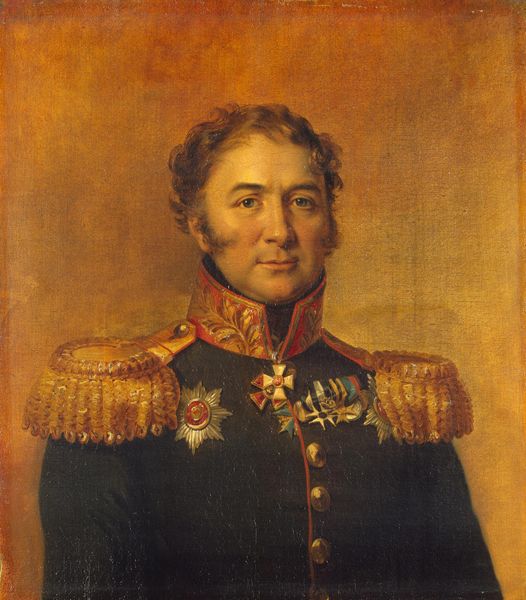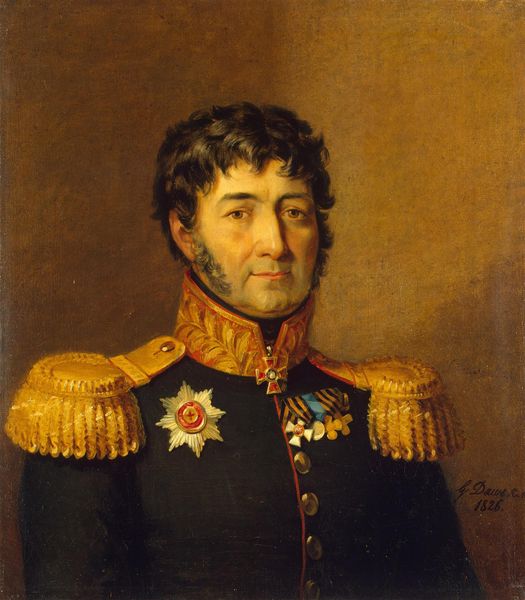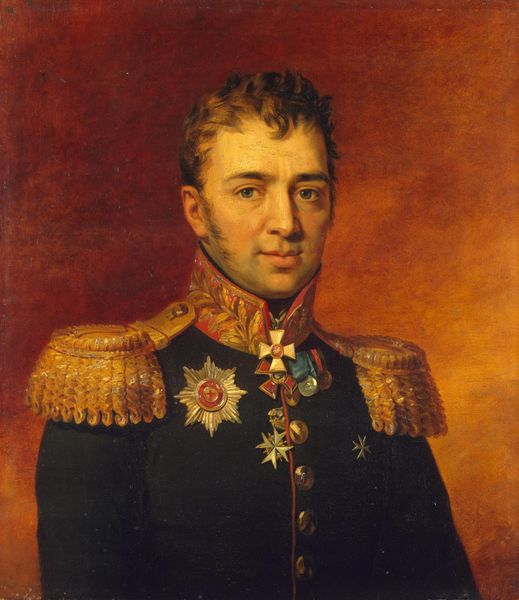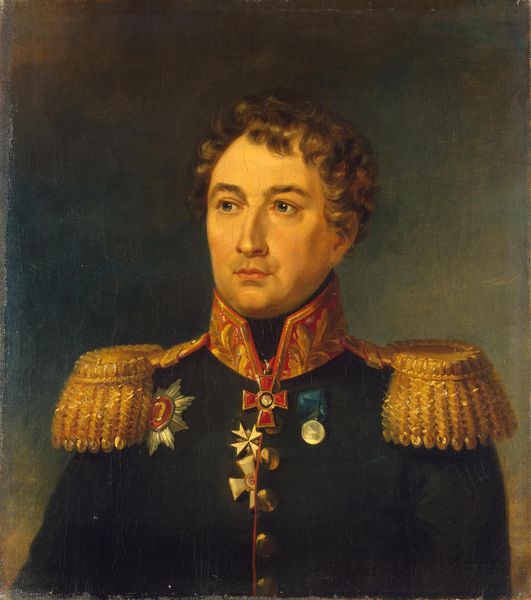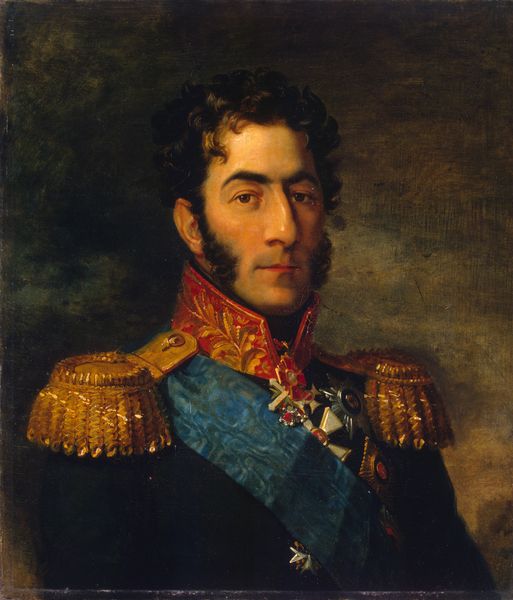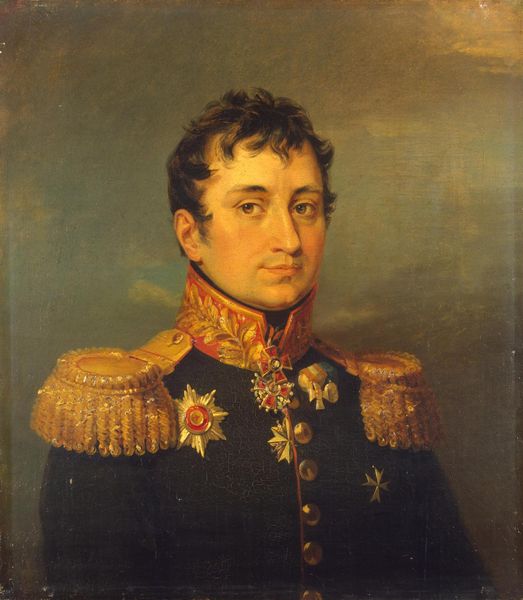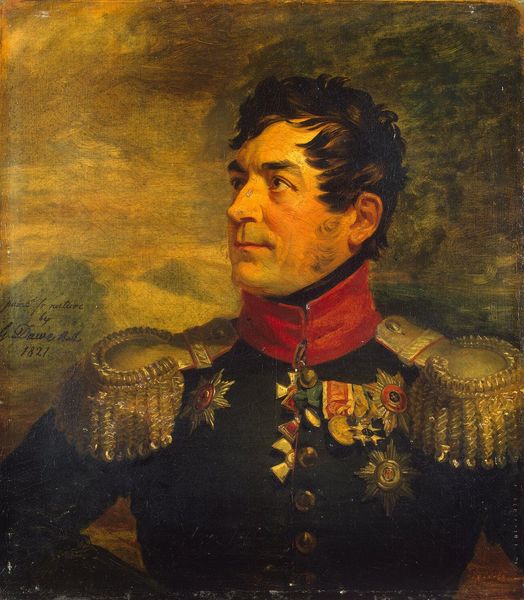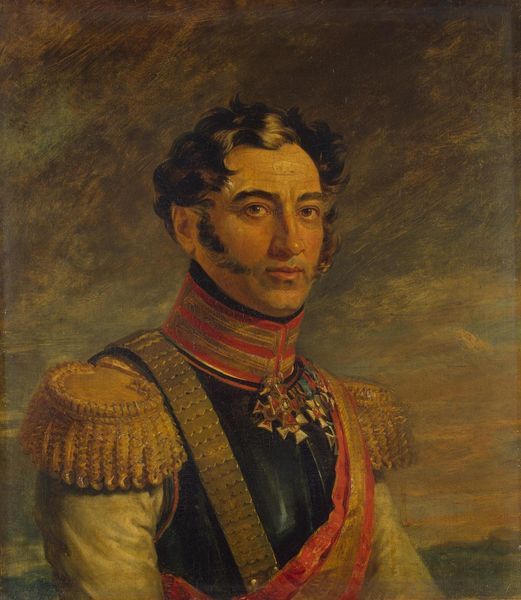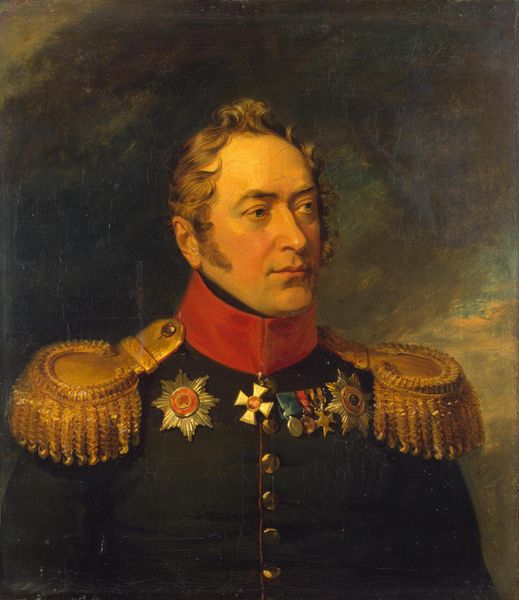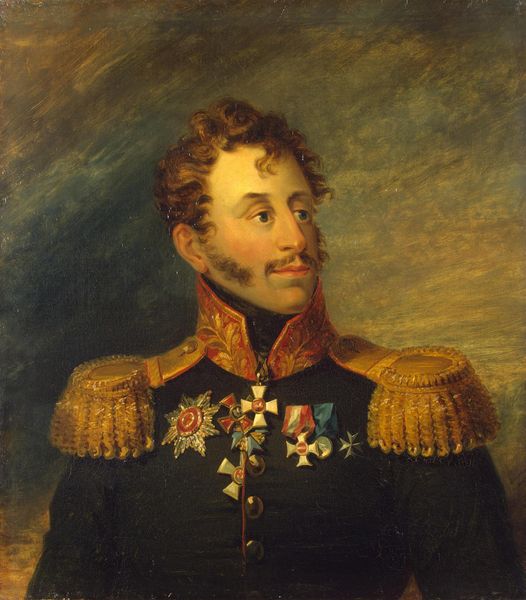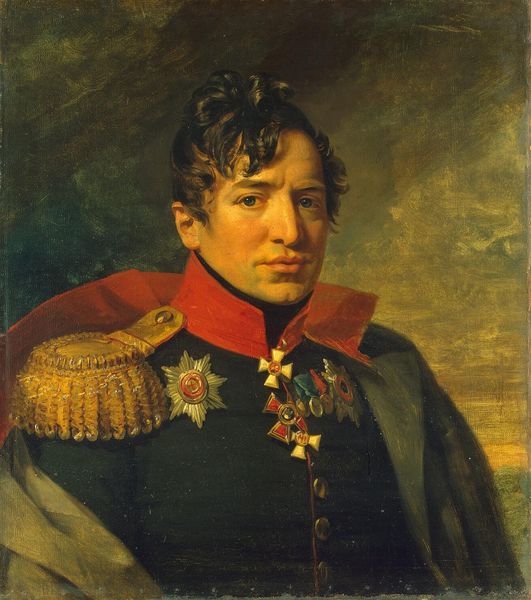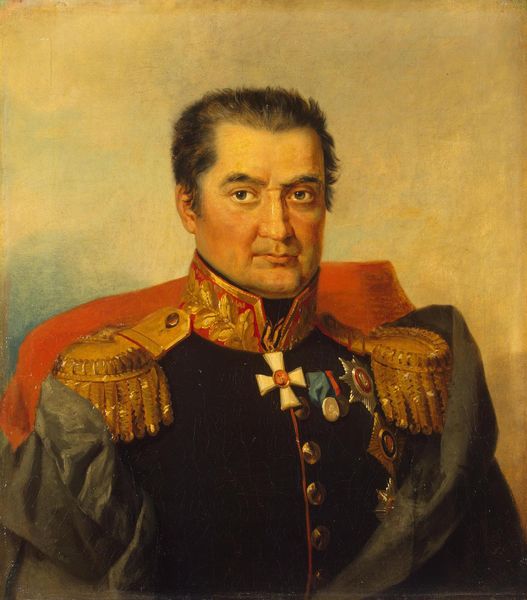
painting
#
portrait
#
painting
#
romanticism
#
history-painting
Copyright: Public domain
Editor: This is George Dawe’s “Portrait of Alexander F. Langeron,” painted in 1825. Looking at it, I'm immediately struck by how the weight of those elaborate military decorations contrasts with the somewhat soft, almost gentle expression on Langeron's face. What social and political forces do you think were at play here? Curator: The tension you observe speaks volumes. Langeron, a military figure, is presented within the context of early 19th-century Romanticism. However, to read this work critically, we must acknowledge that these glorifying portraits were tools of power. Think about the political implications. How does Dawe negotiate Langeron’s personal identity with the constructed image of Imperial Russia? Who benefited from this image? Editor: So it's less about capturing an individual and more about projecting an image of strength and authority? Curator: Precisely. These portraits served to solidify power structures. But let's dig deeper. Langeron, as a military governor, participated in the colonial project of Imperial Russia. Consider how his story intersects with issues of empire, class, and gender within a broader European framework. Whose stories are omitted when we focus solely on these elite figures? Editor: I never thought of it that way. It’s fascinating how a portrait can be both a celebration of an individual and a statement of power. It challenges me to think about who has the privilege of being seen, and on what terms. Curator: Exactly. By acknowledging the complexities and power dynamics inherent in artistic representation, we can start to unpack the historical context that makes this portrait much more than just an image of a man. What this work demands is to bring conversations about class, about privilege and gender, and race, to the forefront. Editor: This has definitely changed how I’ll be looking at portraits from now on. It's not just about who's in the frame, but what the frame itself represents.
Comments
No comments
Be the first to comment and join the conversation on the ultimate creative platform.
